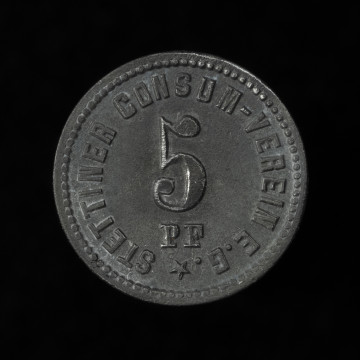
One-sided kontusz belt
National Museum in Lublin
Part of the collection: Archaeological monuments of the Lublin region
The object found its way into the museum's collection in the interwar period. Unfortunately, like most of the collections of that time, it is devoid of any official record. It probably comes from the area of western Ukraine. It can be dated to the 1st century AD. It is assumed that it was made by people of the Sarmatian culture. Such artefacts are often found in the barrow graves of the Sultan phase of this culture.
The massive cauldron was made of bronze. It has a slightly curved outward edge. Above it rises a bow handle decorated with three nail-like pins. The second handle, probably symmetrically placed on the opposite edge, has not survived and has been broken off. Along the widest part of the belly there are two parallel convex strips. They probably imitate string. The bottom has the form of a high foot.
On the surface of the cauldron one can see traces of repairs of damages made during use. The whole boiler is covered with green patina.
The discovery of the relic far from the original seats of the Sarmatians may indicate the functioning of long-distance trade directed to the west. The Sarmatians belonged to nomadic peoples. Their lifestyle and economy were connected to pastoral animal husbandry. From the 3rd century BC they inhabited the area between the Don and the Black Sea. During their westward migration they displaced the Scythians, reaching the Danube, the borders of the Roman Empire, at the end of the 1st century BC.
Author / creator
Dimensions
cały obiekt: height: 9 cm, width: 32,6 cm, diameter: 29,5 cm
Object type
dish
Technique
forging
Material
bronze
Creation / finding place
Owner
The National Museum in Lublin
Identification number
Location / status

National Museum in Lublin

1901 — 1925
National Museum in Szczecin

1865 — 1868
National Museum in Szczecin
DISCOVER this TOPIC
Museum of King Jan III's Palace at Wilanów
DISCOVER this PATH
Educational path